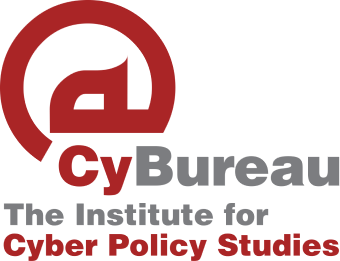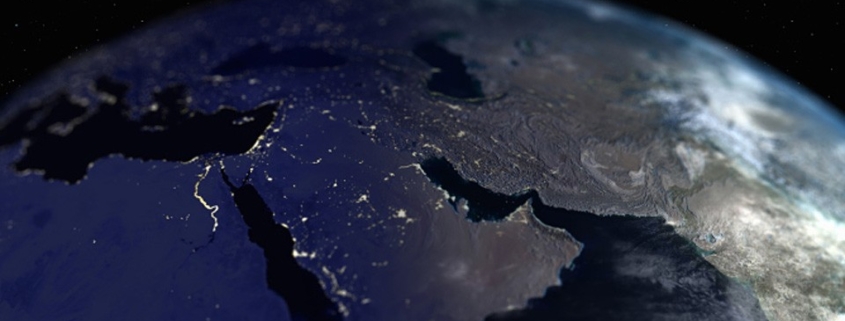Internet and mobile in the service of the revolution
The year 2011 was irrefutably the year of protests and revolutions that began on the social networks. It is not without good reason, that the events in Egypt were dubbed “The Facebook Revolution”, that social network being the source for creating and organizing the protests. Facebook was the online stage, from which the events tumbled into the streets of Egypt, and later on, to many other Middle Eastern countries and even Israel.
The Internet, and especially the cellular Internet, was the central tool in creating the protest events in our region, but what do we know of their penetration into our region and of the rate of their use?
To the outsider, Internet and the Middle-East seem not to go together: The Internet represents progress, technology, individual freedom and freedom of speech, equality and the lack of hierarchy and the availability of information. In contrast, the Middle East, to the observer, represents conservatism, patriarchal structures, traditionalism, the lack of individual freedoms and freedom of speech, centralism and technological restrictions.
However, a deeper look shows some fascinating and surprising facts about the Internet and cellular technology in the Middle East. Because of its immediate, available and free nature, the Internet acts as a stage and a tool for expressing views and protests in centralized regimes in general and in the Middle East in particular, especially for those suppressed and silenced voices in the Arab society- voices which do not get to be expressed in the regular media and are only heard over the online stage.
The rate of penetration of the Internet into the Middle Eastern region is 33.5% (including Israel), a rate which is higher than the worldwide average (30.4%). The rate of penetration of the Internet in Israel has reached 70.4%, however also in the United Arab Emirates it has reached 69.4% and in Qatar, 66.5%. Even in closed and conservative Iran, the rate of penetration of the internet has reached an astounding 46.9%.
Arabic is today the seventh most common language on the Internet. The Arab Internet has seen a 2,260% growth rate over the past decade- the region with the fastest growth in the world.
The cellular arena is also seeing vast growth in the Middle East: A concrete example for this is found in a survey conducted in April this year, among two thousand smart-phone users in the Middle East. The data shows that among those who do not have such an appliance, 82% want one, 49% of those who have one are planning to upgrade it over the coming 6 months and 70% shall do so over the coming year.
95% of smart-phone owners download various applications, six of them per month, on average. 24% expressed their willingness to pay even more than 50$ for such applications. And what applications are the most popular? 73% prefer applications that will simplify their lives, 57% prefer games.
A more general look shows some more interesting information: the number of cellular lines among the 19 Arab countries increased from 274 million in 2009 to 320 million in 2010. In the United Arab Emirates, the rate of cellular penetration has reached 198%, in Saudi Arabia, 188% and in Oman, 170%.
This information has its expressions also in financial terms: for instance, 53% of companies in Saudi Arabia have increased their spending on cellular advertising.
These data are quite meaningful in regard to using the Internet and cellular Internet in the Middle East for creating events and reporting them. The girl Nada Sultan, who was shot by Iranian security forces during the demonstrations following the June 2009 presidential elections there, would have remained an anonymous casualty, if not for a passerby who had filmed her dying moments by use of his cell-phone and uploaded it onto the Internet immediately. She was instantaneously transformed, and YouTube along with her, into the hero of that protest.
The same thing happened with the information about the death of Libyan dictator, Muammar Gaddafi: formal reports claimed that he had been killed during a NATO bombardment of his convoy of vehicles. However, shortly afterwards, short videos were uploaded onto the Internet showing Gaddafi injured but standing on his own two feet after being captured by the rebels. These videos were filmed using the cell-phones of the rebels who had captured him. Later on, further videos, showing the first few seconds after his capture and also the beginning of his being lynched afterwards, were uploaded.
In this case, cellular-Internet uncovered the truth and solved the mystery of Gaddafi’s death.
The penetration of technology in general and the Internet in particular is influenced by many and varied factors, which are all controlled by the government: The use of the Internet requires human capital, having some level of fluency in computerized workspaces and Arabic (at least); monetary resources for acquiring a computer and an Internet connection; a technological and communications infrastructure. In addition, governments have sets of laws and appropriate enforcement mechanisms and even the ability to completely disable the Internet, such that any state has the ability to steer Internet usage and even completely disable it within the country’s boundaries, as was done in Libya, Egypt and Syria (for varying amounts of time, from a few hours to a few months), during the “Arab Spring” of 2011. However, the Internet, including the cellular Internet which can “report live”, irrefutably makes it possible to create news and expose events, and thus change reality in our region, and as we saw in Egypt, to even bring governmental change, and maybe even more democracy to the Middle East.
This post is also available in:
עברית

